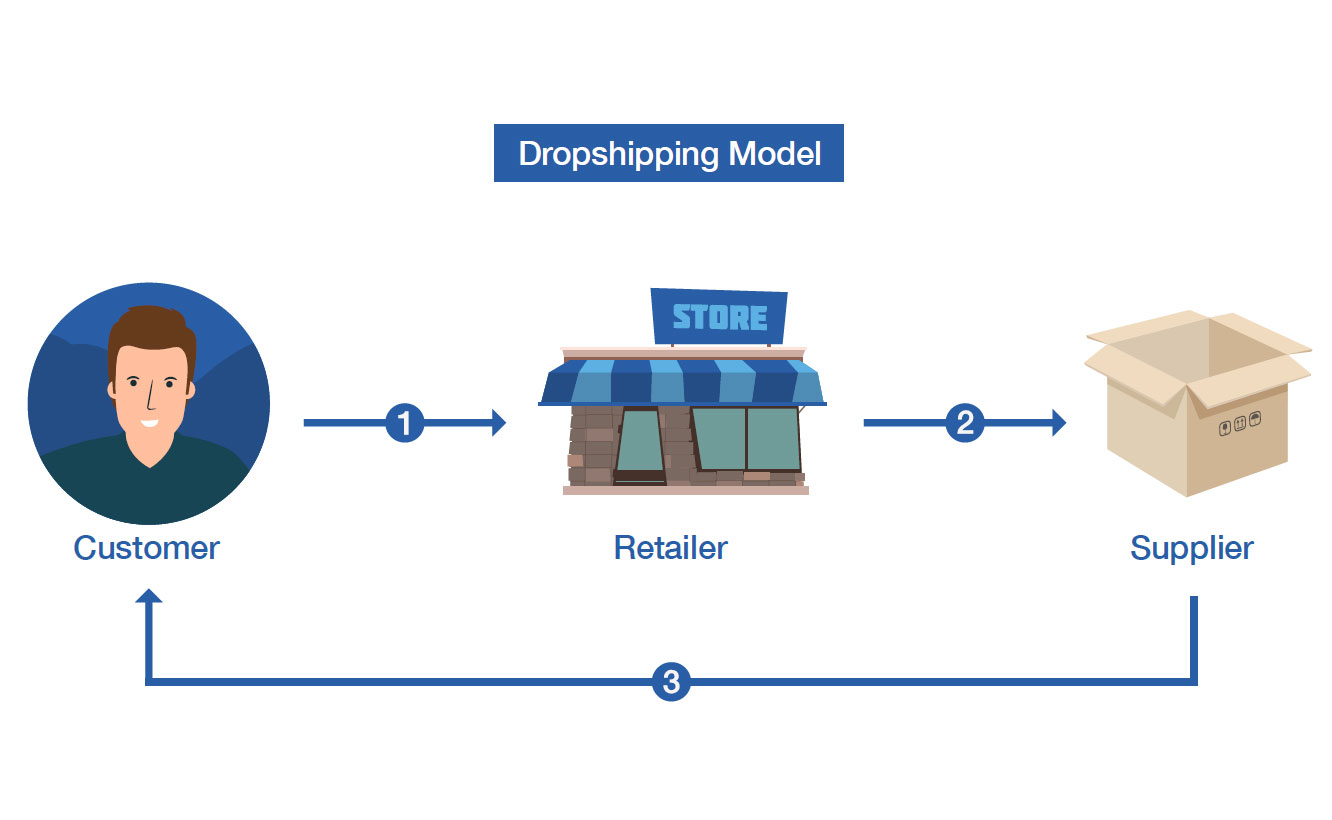Dropshipping is one of the most popular and available ways to start an online business today. But what exactly is dropshipping, and why has it become such a buzzword in the e-commerce world? In this article, we’re going to dive into what exactly dropshipping is, how it works, its benefits, and what you need to know to get started.
How to understand dropshipping: the basics
Basically, dropshipping is a retail method of fulfillment in which the selling party does not stock up on any products. Here, when the store sells a product, it purchases the item from a third party and has the product shipped directly to a customer. This way, the seller never handles or sees the product.
How Does Dropshipping Work?
This is a common work-up of the working of the normal process of dropshipping:
- Customer Orders Product: A customer comes to your online store and orders a product.
- Order is Forwarded to Supplier: You, the store owner, forward that on to your dropshipping supplier.
- Supplier Ships Product: Your supplier prepares and ships the ordered product to your customer.
- You Make a Profit: The difference between what your customer has paid you and what you have paid the supplier is your profit.
In this model, entrepreneurs are able to devote their time to marketing and customer service rather than managing inventory, and that’s the reason starting a business with little to no upfront investment becomes so appealing.
The Advantages of Dropshipping
Of the many benefits to using dropshipping, the following make it a very attractive business model for entrepreneurs of any level of experience:
- Low Startup Costs: Since you don’t have to hold the inventory initially, upfront costs to get a dropshipping business off the ground are radically lower than a traditional retail model.
- Reduced Risk: Avoidance of advance stock purchase removes the risk of unsold inventory. You only pay for what you sell.
- Large Variety of Products: You can carry many, if not hundreds, of products without having to store them in inventory. Without storage requirements, it would be easier to quickly respond to market trends and needs of customers.
- Location Independence: You can work from anywhere in the world as long as you have access to the internet—very good for digital nomads or for any person looking for freedom from location constraints.
- Scalability: The more your business grows, the more workload it doesn’t really entail. Since the supplier is in charge of the fulfillment, you can work on scaling other parts of your business, such as marketing or customer support.
Possible Problems with Dropshipping
Although there are a lot of plus sides to dropshipping, it is equally important to know what this business model can expose you to:
- Lower Profit Margins: Since you aren’t buying in bulk, your profit margins may not be as high as regular retail. You really have to work on your pricing strategies and marketing to remain profitable.
- Dependency upon Suppliers: Your business is highly dependent upon your suppliers. Any issues with their stock levels, their shipping time, or the quality of the product directly affect your customer’s experience.
- Inventory Management: As you do not own the inventory, tracking stock levels can be a bit cumbersome. When a supplier has inventory issues, you may sometimes seek out another supplier to replace them urgently.
- High Competition: Due to a very low barrier of entry, dropshipping has become an ultra-competitive marketplace. You will need to establish niche markets, work on great customer service, and build brand strength so you stand out from your competition.
How to Start a Dropshipping Business
To get into starting a dropshipping business, here are the easy initial steps:
- Choose a Niche: Focus on one specific area of interest that you are passionate about and has market demand. This way, you can zero in on an audience and differentiate yourself from competitors.
- Find Reliable Suppliers: Partner with trusted suppliers that offer quality products, timely shipment, and excellent customer service. AliExpress, Oberlo, and SaleHoo act as launching pads for your search.
- Setting Up Your Online Store: You require an ecommerce platform to set up your store. Some of the popular ones are Shopify, WooCommerce, BigCommerce, among others. Ensure that it is user-friendly, mobile responsive, and SEO friendly.
- Market Your Business: Here you want to attract customers into your store using a mix of SEO, social media marketing, content marketing, and paid advertising. Only a developed brand has a chance to capture its target audience.
- Order Management and Customer Service: Follow-up in orders and customer service considerably instill confidence in the buyers for purchasing again.
Is Dropshipping Right for You?
This can become not only very lucrative but also flexible for people who want to start an online business. It, however, comes with challenges. Success in dropshipping requires strategy; it calls for niche markets, reliable suppliers, and strong marketing efforts.
Whether you’re looking to earn extra income or create a full-time business, dropshipping offers a low-risk entry to e-commerce. If you understand the basics and know what to expect in terms of problems, then you will be able to exploit this popular business model for creating a profitable online store.










